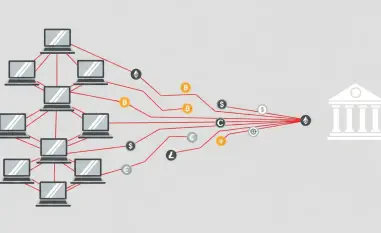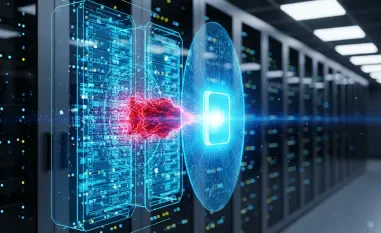Imagine a digital battlefield where malware evolves at an unprecedented pace, outsmarting traditional cybersecurity defenses with every passing day, and by 2025, cyber threats have escalated to a point where manual analysis struggles to keep up, leaving organizations vulnerable to sophisticated attacks. This roundup dives into the potential of artificial intelligence to transform malware detection, spotlighting Microsoft’s innovative Project Ire. By gathering insights from industry perspectives, expert opinions, and technological evaluations, this discussion aims to uncover whether AI-driven solutions can truly redefine the fight against cybercrime and how Project Ire fits into this evolving landscape.
Exploring the Cybersecurity Crisis and AI’s Role
The complexity of modern malware has pushed traditional detection tools to their limits, with signature-based methods often failing to identify zero-day threats. Many industry analysts argue that the sheer volume of alerts overwhelms security teams, leading to fatigue and missed critical threats. This growing gap in defense capabilities has sparked interest in AI as a potential game-changer for automating and enhancing threat identification.
A significant point of consensus among cybersecurity professionals is that AI offers unparalleled speed in processing vast datasets, a capability unattainable by human analysts alone. Perspectives from tech forums suggest that initiatives like Project Ire, which autonomously analyzes software files, represent a shift toward proactive rather than reactive security. However, some caution that over-reliance on automation could introduce new vulnerabilities if not paired with human oversight.
Differing views emerge on the readiness of AI to tackle nuanced threats. While some industry voices champion the precision of AI models in controlled tests, others highlight concerns about false positives in real-world scenarios. This debate sets the stage for a closer look at how Project Ire addresses these challenges with its unique approach, balancing technological innovation with practical application.
Unpacking Project Ire’s Innovative Features
Precision in Malware Analysis
One of the standout aspects of Project Ire, as noted by various tech evaluators, is its ability to reverse engineer software files with remarkable accuracy. Using advanced decompilers and language models, the system dissects files to detect malicious intent, achieving a precision score of 0.98 and a recall of 0.83 in tests on Windows drivers. Such metrics have impressed many in the field who see this as a leap forward in automated detection.
Feedback from cybersecurity communities also points to Project Ire’s success in analyzing approximately 4,000 hard-target files, a feat that underscores its potential for handling complex, unclassified threats. This capability has led some to view the tool as a reliable first line of defense. Yet, there remains skepticism about whether such precision holds up against entirely novel malware strains that lack prior data points.
A contrasting opinion within industry circles questions AI’s dependability compared to seasoned human analysts. Critics argue that while Project Ire’s numbers are promising, the risk of misclassification in uncharted scenarios could have severe consequences. This tension between trust in automation and the need for human validation continues to fuel discussions on its deployment.
Combining Automation and Human Insight
Another focal point of Project Ire is its hybrid model, blending AI analysis with human expertise. Industry insights reveal that the system incorporates a self-validation mechanism, cross-referencing its findings with input from Microsoft’s reverse engineering teams to ensure accuracy. Many professionals see this as a balanced approach that mitigates the pitfalls of fully automated systems.
Reports from tech analysis platforms highlight a historic milestone: Project Ire authored a conviction case for an advanced persistent threat malware sample, now blocked by Microsoft Defender. This achievement has been praised as evidence of AI’s real-world impact, with some suggesting it could redefine legal and operational responses to cyber threats. The collaboration between machine and expert input is often cited as key to this success.
However, not all feedback is unequivocally positive. A segment of cybersecurity strategists warns against over-dependence on AI, especially in high-stakes environments where errors could be catastrophic. The consensus leans toward using such hybrid models as a supportive tool rather than a standalone solution, emphasizing the importance of maintaining human judgment in critical decision-making.
Scalability for Emerging Threats
Project Ire also garners attention for its focus on scalability, aligning with the broader industry trend toward automation. Various tech reviews note Microsoft’s ambition to enhance the system’s ability to classify threats in memory at scale, potentially transforming global cybersecurity practices. This vision resonates with many who see scalability as essential for addressing the growing volume of digital threats.
Regional and sector-specific perspectives add depth to this discussion, with some experts suggesting that implementation could vary based on local regulations and infrastructure. For instance, sectors like finance might prioritize real-time detection over others due to higher risk profiles. Such tailored applications of Project Ire are seen as a strength by proponents of adaptable AI solutions.
On the flip side, there’s a recurring concern about whether AI can fully replace human oversight in an automated future. Industry debates often circle back to the evolving role of analysts, with many arguing that while tools like Project Ire can handle volume, the nuanced understanding of context remains a human domain. This sparks ongoing conversations about the balance of roles in cybersecurity.
Easing Analyst Workloads
A widely discussed benefit of Project Ire is its potential to alleviate burnout among security analysts by automating repetitive tasks. Insights from collaborative tech teams indicate that reducing the manual burden of investigating ambiguous malware samples allows professionals to focus on strategic priorities. This shift is viewed as a significant step toward improving workplace efficiency in cybersecurity.
Comparisons to traditional tools reveal a stark contrast, as many older systems lack the intelligent design of Project Ire. Observations from industry panels suggest that integrating AI more deeply into existing frameworks could further streamline operations, a prospect that excites forward-thinking organizations. The reduction in alert fatigue is often highlighted as a key advantage over outdated methods.
Looking at long-term implications, some professionals speculate that this reallocation of workload could redefine analyst roles entirely, pushing them toward more creative and analytical tasks. The empowerment of teams to tackle high-level challenges rather than mundane classifications is a recurring theme in discussions. This potential transformation underscores the broader impact of AI integration on the industry.
Key Takeaways from Project Ire’s Capabilities
Summarizing the diverse opinions, Project Ire stands out for its precision, scalability, and hybrid validation model, positioning it as a turning point in malware detection. Tech assessments consistently praise its ability to handle complex files and reduce analyst strain, while its integration with Microsoft Defender offers practical value to organizations. These features collectively paint a picture of a tool that could significantly enhance security frameworks.
For organizations looking to adopt AI-driven solutions, a balanced approach emerges as a common recommendation. Leveraging tools like Project Ire within existing systems can optimize threat detection, but maintaining human oversight remains crucial. This hybrid strategy is often cited as the most effective way to harness automation without sacrificing accuracy.
Additionally, cybersecurity teams are encouraged to prioritize training on AI tools to maximize their benefits. Aligning automated processes with human judgment can streamline daily operations and improve response times to threats. This actionable guidance reflects a broader consensus on adapting to technological advancements while preserving critical thinking in defense strategies.
Reflecting on a Path Forward
Looking back, the exploration of Project Ire through various industry lenses revealed a shared optimism about AI’s role in malware detection, tempered by cautious calls for balance. The discussions highlighted a historic shift toward automation, with Project Ire serving as a benchmark for precision and scalability in addressing cyber threats. Its integration of human expertise alongside machine efficiency stood out as a model for future innovations.
Moving forward, organizations should consider investing in AI tools as part of a broader security overhaul, ensuring that training and validation mechanisms are in place to support their deployment. Exploring collaborative platforms where AI and analysts work in tandem could further enhance outcomes. These steps offer a practical roadmap for navigating the complexities of modern cybersecurity.
As the digital landscape continues to evolve, staying informed about advancements like Project Ire will be essential. Delving into industry reports and case studies on AI-driven defense can provide deeper insights into optimizing these technologies. This proactive approach ensures that the cybersecurity community remains equipped to tackle emerging challenges with both innovation and vigilance.













